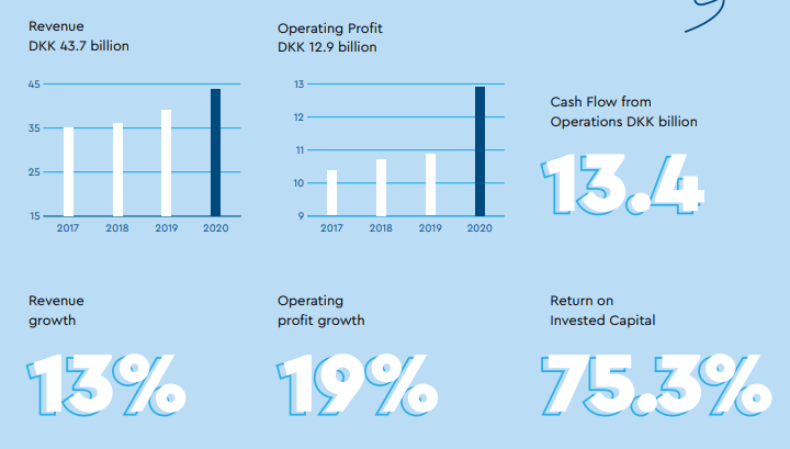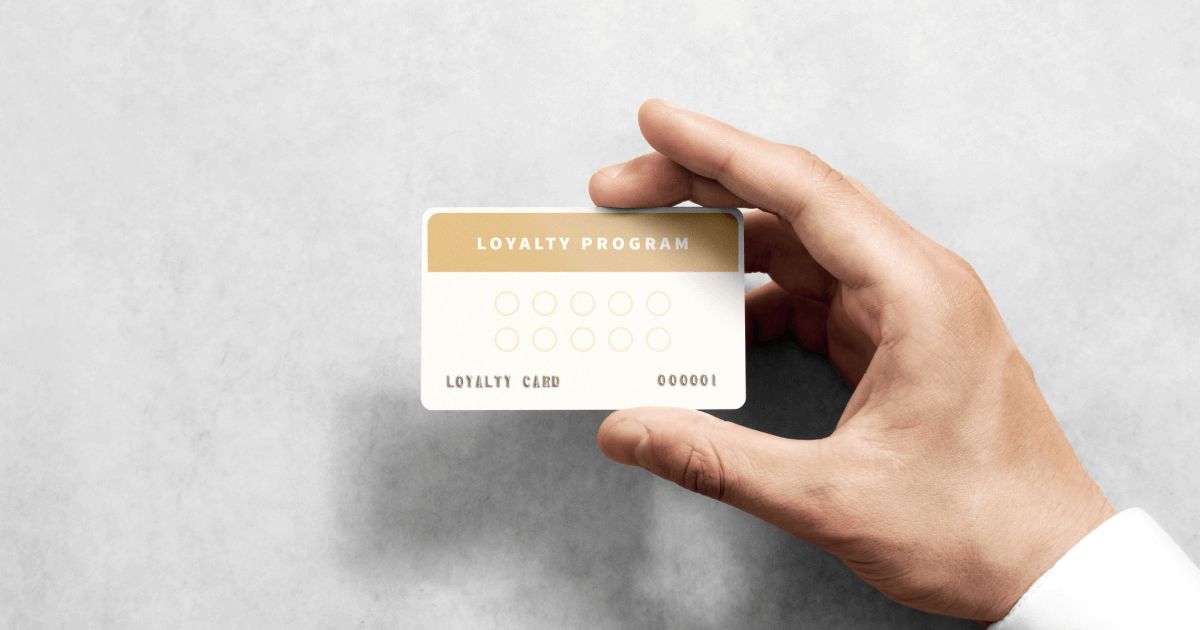August 30, 2021
Building a brand loyalty strategy focused solely on millennials might sound too niche. But imagine a potential customer who has an ear for empty promises. A hard-earned tech-savviness from pioneering the Internet. A huge network of friends and acquaintances listening to every thought they share. Oh, and a penchant for avocado toast. Okay, now imagine there are 1.8 billion of them, and they outnumber both Generation X and baby boomers.
Yep — we’re talking about millennials.
Getting millennial brand loyalty isn’t just useful to your brand — it’s absolutely vital to staying in business long term. But building this loyalty is challenging. Winning millennials’ brand loyalty takes honesty, provable quality, and the courage to make a real statement with your brand messaging.
Don’t be afraid to take a stand on social or industry issues
The saying “silence is violence” might seem like a huge exaggeration for a company selling shoes or luxury scarves, but it’s a critical phrase for marketers who want to understand millennial psychology.
“Silence is violence” means that saying nothing about injustice is the same as supporting injustice. Many millennials endorse this idea and want their brand to have a “take” on the issue of the month. Social issues, global issues, or even just a strong opinion about an aspect of your industry that’s taking public heat.
Millennials care, and so should your brand. The Deloitte Global Millennial Survey 2020 polled over 27,000 millennials and Gen Z’ers across over 40 countries. By an overwhelming margin, most millennials felt an upswing of sympathy, empathy, and a desire to create a better world after the pandemic.
Later in the study, 60% of all respondents claimed they intend to “buy more products and services from large businesses that have taken care of their workforces and positively affected society during the pandemic.” Furthermore, 38% of millennials said they had connected more with businesses that have had a “positive impact on the environment.”
In a different study, Nielsen IQ found that 74% of millennials are more likely to buy brands supporting social issues they care about.
Get comfortable getting uncomfortable
Essential if you want to connect with millennials and earn their trust. If your brand doesn’t take a side on a relevant hot-button issue, you’re still taking a side in the eyes of many young consumers. And maybe not the side you intended to take.
When Starbucks announced they would create 10,000 jobs for refugees, they faced widespread blowback from anti-refugee groups (and President Trump.) However, Starbucks also got plenty of support for this choice. Especially from celebrities and influencers, who went to bat for Starbucks and spread the news to their followers.
Jessica Chastain, award-winning actress, producer, and one of Time’s top 100 most influential people in the world, signal-boosted Starbucks’ new policy to all of her 800,000+ followers.
This kerfuffle occurred back in 2017. Despite an unsuccessful boycott attempt by those opposed to the refugee decision, Starbucks has nearly doubled its market cap since.
Obviously, the controversy isn’t the sole source of this growth. But it certainly did Starbucks no financial harm to stake out a strong position on a sensitive topic.
Market research showed Starbucks wasn’t negatively affected by the controversy. In a public letter from market research firm Kantar Millward Brown, the company’s president Brian James confirmed just how little Starbucks’ public support of refugees damaged the brand.
“After the announcement—we did not observe any substantive impact on Customer Consideration, Future Visitation Intent or Brand Perceptions or any other key performance metrics for the Starbucks brand,” concluded James.
So let your company take a stand where it matters. You’ll likely find that “controversial choices” can earn you lifelong millennial customers without damaging your bottom line.
Three things to remember when entering the public debate as a company
- The stand you’re taking is important to you and relevant to your industry, product, or service.
- All voices for the company are well educated on the topic at hand.
- Real donations, policy change, and notable action must follow any declarations of support.
Keep your promises because millennials keep receipts. When brands don’t follow these rules, they end up with toothless messaging that gets ribbed on social media. Consider this Twitter screenshot as exactly the messaging to avoid:
Millennials value authenticity and honesty. They know how to screenshot a brand statement and call you out if your business doesn’t live up to it. In fact, 82% of consumers say they’ll stop using a brand forever if they feel the brand has broken their trust.
Taking a stand isn’t always pleasant, and it’s true you may suffer criticism from those who don’t agree. But the millennial consumers on your side will back you and your company in the long run. In fact, buying your products and services will feel like a righteous moral choice for those who agree with you. And that’s the kind of customer loyalty you can’t buy!
Share how your products and practices are helping the world
Millennials will pay more for a “guilt-free” product. Three-quarters of millennials have said they would pay more for products if they came from a socially responsible company.
The most popular factors for this generosity are:
- Sustainability of the product
- Use of organic/local/natural ingredients
- Environmental friendliness of the manufacturing/transportation process
A survey by Markstein and Certus Insights found that 44% of millennials believe that every business should be active with environmental initiatives. It’s a stark contrast from the 35% of baby boomers who believe the same thing. And the 28% of Gen X.
Basically, corporate social responsibility (CSR) has a correlation with how far millennials will open their wallets. And considering that shoppers are projected to spend $150 billion on sustainable goods this year, those are big wallets.
Brands are winning millennial brand loyalty with sustainable practices
In 2018, LEGO announced it was working on changing its classic block material. They were moving from plastic to a polyethylene material made from sustainable sugar cane. Millennials reacted positively to this news, even though the material turned out to be not quite right for LEGO bricks in the long run. But the positive effect of its dogged pursuit of more ethical manufacturing lingers.
LEGO’s consistent commitment to environmentally-friendly practices has grabbed headlines and kept its brand in the news. It earned goodwill (and good press) after a children’s letter-writing campaign convinced it to nix the single-use plastic bags from its packaging and replace them with recyclable paper bags. LEGO even has its own page at the World Wildlife Foundation dedicated to its sustainability efforts.
According to the LEGO Group Annual Report in 2020, revenue has grown in the double digits across sales and operating profit. With no signs of slowing down. Considering its sustainability research and efforts have cost them hundreds of millions of dollars out of pocket, that’s worth noting.

LEGO didn’t just see higher sales. In 2020 and 2021, the Global RepTrak 100 Survey crowned the LEGO Group the most reputable company on the planet.
Obviously, not every company can afford to throw millions of dollars into sustainability research like the LEGO Group can. Which doesn’t really matter, because it’s not really about how much money you spend. Take KeepCup, for example, that appeals to the millennial love for the environment by featuring an “impact calculator” on its website.
If your brand’s actively working toward a good cause, get that news out into the world to grab millennial goodwill.
Communicate your value beyond price
Living through two major recessions has made millennials frugal shoppers by necessity. Not to mention having less generational wealth than those who came before. And since they’re well-versed in digital shopping, millennials can find a service or product that’s cheaper than yours. From their phone. In about five seconds.
Don’t try to earn millennial loyalty with affordable prices. While this price-conscious mindset might seem like you ought to focus on price, it’s actually the opposite. Your “low” price can always be beaten with a quick online search. A search a millennial shopper has probably already performed. Hooking a millennial with a “low price” is like trying to sell ice to a Siberian.
You need to show millennials the true value of your product or service. Unless you want a price race to the bottom. According to a KPMG study, pricing is the least important factor in creating brand loyalty. The resource you have that they are interested in is quality.
Product quality is still the #1 reason for brand loyalty. As the above infographic shows, value is #2, and “product consistency” is #3. Which is just another facet of “quality” really. If you can consistently deliver a top-notch product and illustrate its value to millennials (regardless of price), you’ll be perfectly positioned to earn their brand loyalty.
Influencers influence millennial brand loyalty
Obviously, “make a quality product” isn’t terribly useful advice. But you do need to prioritize communicating the quality of your product in highly visible locations. For millennials, those highly trafficked areas are going to be on social media. Your medium is going to be influencers and reviews.
Many millennials trust influencers. According to a Fullscreen study (shown below), 55% of millennials believe social media influencers are honest about their beliefs and opinions. Another 41% believe influencers’ recommendations are accurate. Micro influencers are especially trusted sources.
Consider reaching out to influencers online to capture the attention and trust of your millennial audience.
What’s in a review?
You can also communicate your value to millennials through reviews. 85% of millennials say that product reviews are “a must” before a purchase is considered.
Before choosing reviews to showcase, there’s three main criteria to consider:

Here’s a few tried-and-true methods for obtaining reviews for your products:
- Send automated emails to remind customers to review products they’ve purchased.
- Reward loyalty-program members who leave reviews.
- Utilize Influenster’s unique sampling solution. Use hyper-targeted VoxBox’s to trade product samples in exchange for honest reviews (and other visual content, fyi).
After you’ve done this, turn on ReviewSource to give you a continuous source of authentic review content. Always-on content means always-on sales!
Upon securing positive reviews, use Bazaarvoice ReviewAds to share them in ads, on social media, and across the Bazaarvoice Network of over 11,500 retailers.
Once you’ve communicated the value of your product, you’ll see brand loyalty rise naturally from the trust you’ve established.
Design a brand loyalty program that creates its own value
Next up is rewarding the loyalty you’ve worked so hard to acquire—enter the loyalty program. These loyalty programs enforce a feedback loop. Value creates loyalty that creates a sense of value in the member that creates loyalty that creates…okay, you get it.
Brand loyalty programs must provide rewards that are actually valuable. 37% of millennials don’t see the point of brand loyalty without a loyalty program. If you don’t have a rewards program, that’s a huge chunk of your valuable millennial audience just, poof, gone.
Successful loyalty programs with real value have a few things in common
- Exclusive rewards. There’s nothing more valuable than something other people can’t have. Consider offering a limited-run, members-only product. Maybe even a special customization or feature, or even a unique bit of swag that isn’t available in your store.
- Free shipping. If your company ships products, your loyalty program members shouldn’t be paying for it.
- Novelty. Consider adding new rewards quarterly or changing existing rewards to keep young, prone-to-wander customers on the hook.
- Elevated customer service. Membership has its privileges. So making sure your most loyal customers are moved to the front of the customer service line will engender loyalty and gratitude.
- Gratitude. Speaking of gratitude, your loyalty program should remind your members how appreciative you are of their loyalty. Little surprise gifts on holidays (or out of the blue), special discounts, and even heartfelt letters of thanks create a valuable personal experience with your brand (which millennials appreciate, by the way.)
- Rewards for referrals. Referrals reward both the urge for millennials to engage with their network and the desire for value. Companies have found great success with referral programs for their millennial customers.
- Low barrier to entry. If it takes longer than a minute on a smartphone to join a loyalty program, millennials might falter. Your loyalty program should ideally have an app. If not, it needs to be optimized for mobile users. A simple email and password should get them in. And when you want to gather more data, consider having a prompt that pops up later to add more of their details to your program.
The more time and energy you put into your loyalty program, the more returns you’re going to see. 81% of millennials say that their membership to a loyalty program increased their spending with that particular brand.
That makes loyalty programs a true double-whammy. You reward/enforce brand loyalty and actually end up making more in the long run. This is an area no company can afford to skimp on.
Assess how much you need millennial brand loyalty
Before sinking every penny into millennial outreach, took a look at the statistics from KPMG’s global survey mentioned earlier about millennial brand loyalty:
If you’re selling shoes, clothes, food, drinks, cosmetics, or personal care products, millennials will likely stick with you if you reach out to them with the techniques we’ve discussed. If you target them in your marketing, you’ve got a decent shot at inspiring brand loyalty.
But if you’re selling luxury goods, sporting goods, or household goods, you’re in for an uphill climb. That doesn’t mean millennial loyalty isn’t worth getting. It means you should calibrate your expectations and your marketing budget to a realistic goal.
High risk higher reward
Unless your business is selling avocado toast, winning millennial brand loyalty can be a daunting task. And sometimes a costly one at that. But the reward is far greater than the risk. With a few simple tweaks to make sure you practice what you preach, you’ll have lifelong, loyal customers. Potentially 1.8 billion of them. That’s a lot on your bottom line.
Now you’ve captured the millennial market, read our marketing to Gen Z best practice guide.











